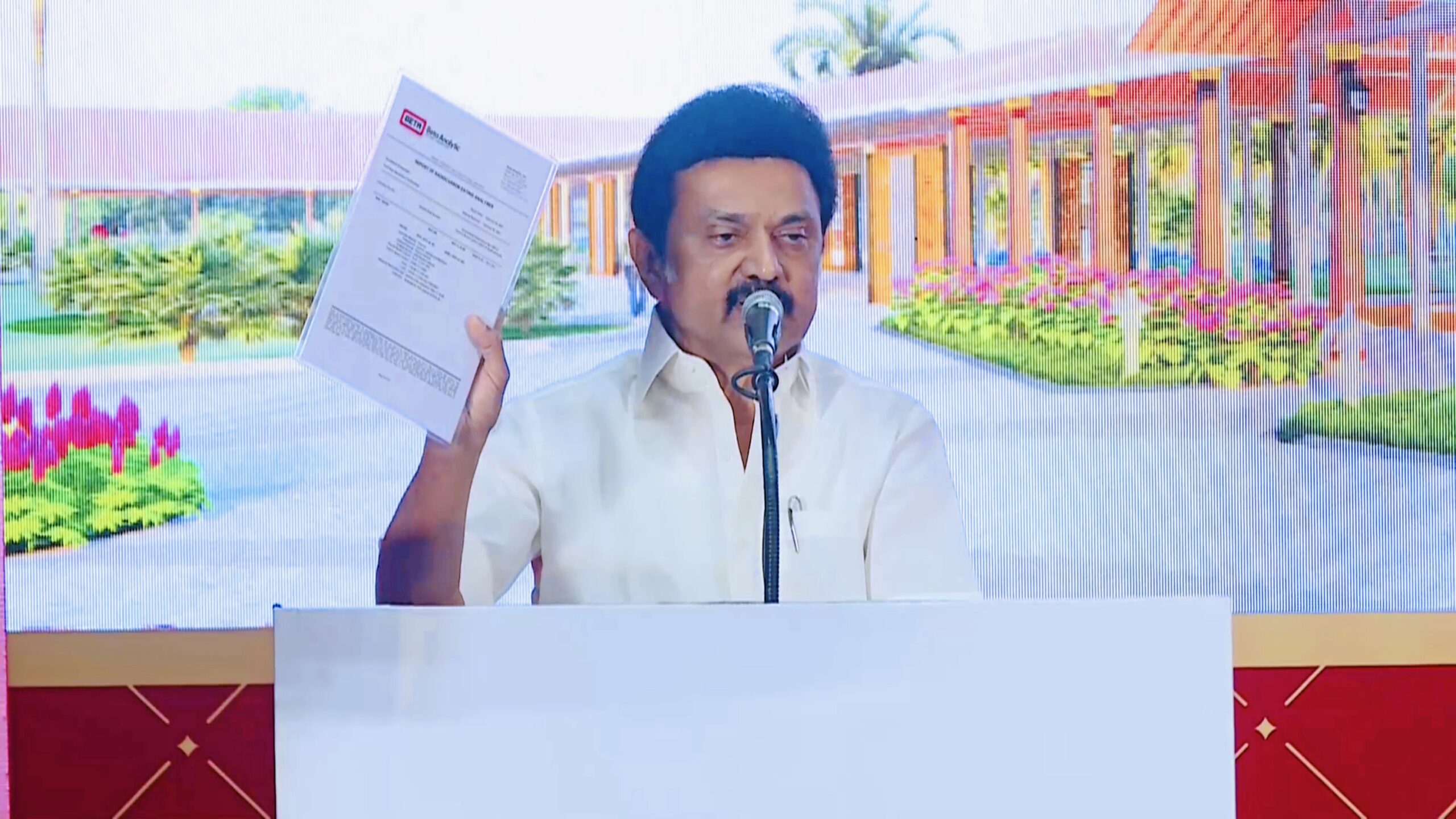Citing independent analysis from — 2023 and 2021 — of artefacts found at Sivakalai excavation sites, the chief minister claimed that the iron age started in Tamil Nadu.
Published Jan 23, 2025 | 5:47 PM ⚊ Updated Jan 23, 2025 | 5:47 PM

Tamil Nadu Chief Minister MK Stalin. (X)
Tamil Nadu Chief Minister MK Stalin on Thursday, 23 January, claimed that Tamil Nadu was the birthplace of Iron Age in India, citing three independent analyses — one from 2021 and two from 2023 — of archaeological samples from the Sivakalai excavation sites in Thoothukudi, Tamil Nadu.
“The Iron Age began on Tamil soil!” he wrote in a post on X. “Based on results from world-renowned institutions, the use of iron in Tamil Nadu dates back to the beginning of 4th millennium BCE, establishing that iron usage was prominent in South India over 5,300 years ago (approximately 3300 BCE).”
With immense pride and unmatched satisfaction, I have declared to the world:
“The Iron Age began on Tamil soil!”
Based on results from world-renowned institutions, the use of iron in Tamil Nadu dates back to the beginning of 4th millennium B.C.E., establishing that iron usage… pic.twitter.com/YYslKX7K5F
— M.K.Stalin (@mkstalin) January 23, 2025
The Tamil Nadu Department of Archaeology commissioned analyses from three renowned institutions to establish the chronology of the Sivagalai findings: Beta Analytic Laboratory in Miami, USA, submitted its findings in August 2021 and two Indian institutions – Birbal Sahni Institute of Palaeosciences (BSIP) in Lucknow, and Physical Research Laboratory (PRL) in Ahmedabad submitted their findings in January 2023.
“What was written in our ancient literature is now becoming scientifically proven history, thanks to the meticulous efforts of our Dravidian Model Government,” Stalin added.
This announcement follows his recent offer of a $1 million (approximately ₹8.6 crore) prize for deciphering the Indus Valley script, through which the government hopes to establish links between Tamil culture and the earlier bronze age civilisation.
Beta Analytic conducted radiocarbon dating on 28 charred carbon material samples, using their ISO/IEC 17025:2017 accredited facilities. Their most significant finding came from sample SGI1-002, dated to 4670 ± 30 years before present (calibrated to 3519-3371 BCE, with 95.4 percent confidence).
Two other samples yielded dates of 4540 ± 30 years before present (calibrated to 3243-3102 BCE, 61.5 percent confidence) and 4300 ± 30 years before present (calibrated to 2939-2881 BCE, 80.7 percent confidence).
Supporting evidence came from independent luminescence dating of ceramic urns. BSIP analysed five urn pieces, with dates ranging from 4,500±400 years before present (approximately 2481±400 BCE) to 3,300±600 years before present (approximately 1281±600 BCE).
PRL analysed two samples, yielding dates of 4,400±400 years before present (approximately 2381±400 BCE) and 4,500±300 years before present (approximately 2481±300 BCE).
The findings align with the state’s recent archaeological initiatives, including excavations at Keeladi, where researchers have discovered artefacts thought to be from the Sangam period (300 BCE to 300 CE) showing potential cultural continuity with earlier civilisations, particularly the Indus Valley Civilisation (3300 BCE to 1900 BCE).
The Tamil Nadu government had earlier also announced a ₹2-crore grant to establish a research chair honouring renowned archaeologist Iravatham Mahadevan. This position will facilitate joint research between the State Department of Archaeology and the Indus Research Centre at Chennai’s Roja Muthiah Library.
(Edited by Dese Gowda)
